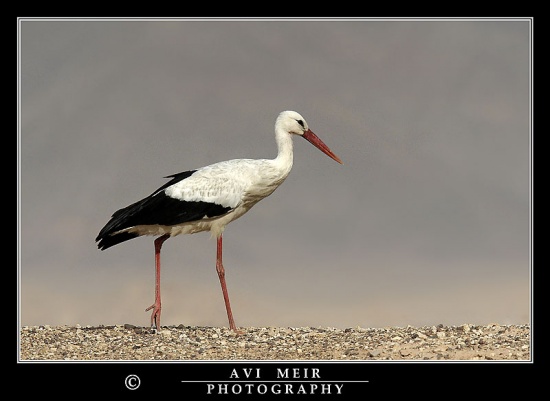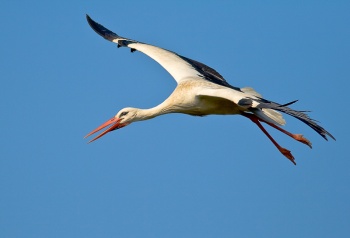- Ciconia ciconia
Identification
100-125 cm
- Mainly white
- Black flight feathers
- Long red bill and legs (duller on juveniles)
Distribution
Europe (north to Estonia), northwest Africa, and southwest Asia (east to southern Kazakhstan).
It winters mainly in tropical Africa, down to the south of South Africa, and also in the Indian subcontinent. An good proportion of European storks winter in Spain.
Taxonomy
There are two subspecies:
Subspecies[1]
- C. c. ciconia:
- Western Palearctic and western Asia: winters to tropical and South Africa
- C. c. asiatica:
Habitat
Open farmland areas with access to marshy wetlands.
Behaviour
Flight
Feet and neck extended when flying.
Breeding
They build a stick nest in trees, on buildings, or special platforms, in loose colonies.
Diet
The diet includes frogs, large insects, young birds, lizards and rodents.
Vocalisation
Not a very vocal bird, but claps the bill, especially on approach of partner or intruder.
<flashmp3>Ciconia ciconia (song).mp3</flashmp3>
Listen in an external program
References
- Clements, JF. 2008. The Clements Checklist of Birds of the World. 6th ed., with updates to December 2008. Ithaca: Cornell Univ. Press. ISBN 978-0801445019.
- Wikipedia
Recommended Citation
- BirdForum Opus contributors. (2025) White Stork. In: BirdForum, the forum for wild birds and birding. Retrieved 9 May 2025 from https://www.birdforum.net/opus/White_Stork
External Links





